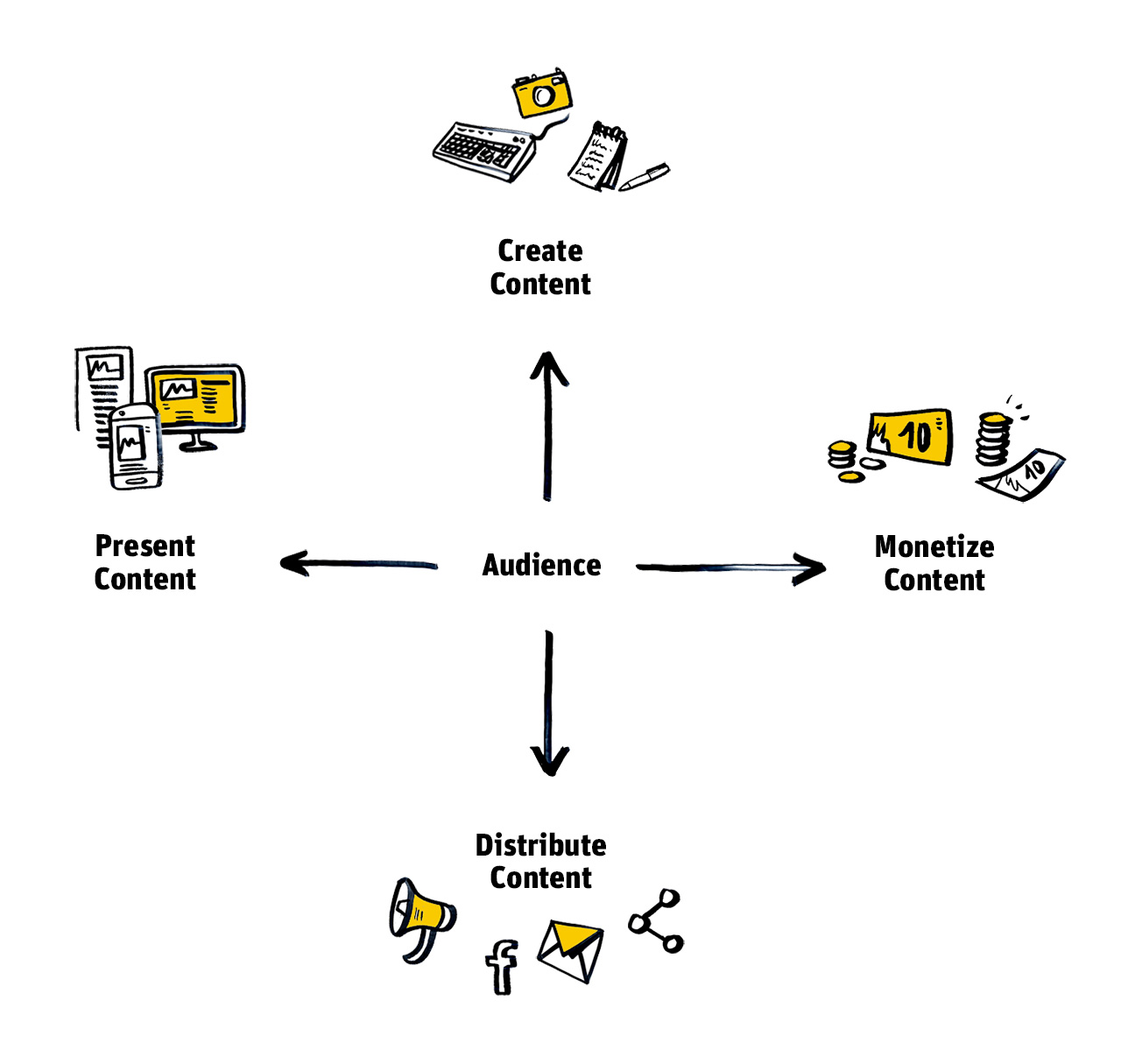Article
Goodbye Postman

I have a confession to make: I just love postmen and postwomen. It is rare for me to meet them in person, but if it happens, I will always talk to them, laugh with them and ask them questions. Oh, and perhaps some of you reading this will remember those peculiar vests with the cute post horn pattern German postmen used to wear?
Traditionally, our role as designers and developers used to be that of a postman – to help deliver a promise or a story to a specific audience. In the last decade, however, this role has changed dramatically and I am very happy about that. It has given us the opportunity to create and establish our very own approach to digital editorial projects. This lets us deliver results that really matter to our clients’ audiences.
These days, when we start to work on any content-driven experience — whether it’s for an established journalistic platform like Zeit Online or a global media outlet for a brand like Red Bull — what’s the first thing we do? Invite their audience to sit with us at the table. Ideally, they will stay with us throughout the whole process of building the product. This requires an investment from us and from our clients. In the best cases, they embrace it and take it over as their job to spend time with users. One of our clients (a deputy editor-in-chief) actually spent 3–4 hours a week talking to a group of users, and over several months. This is outstanding for such a fast-paced industry.
Why does this matter? Because in the B2B business model of selling an audience to an advertiser, sometimes publishers lose sight of what is truly important: the need to come up with a valuable and unique editorial angle and build your audience as you would relationships. Ultimately, your readers matter, not your section editors.
In the course of the last four years, working on over a dozen content-driven experiences, we have developed a fourfold view on digital editorial thinking, one that simultaneously covers perspectives on how original content is created, how it is presented, how it is distributed and ultimately how it is monetized. Of course, all four aspects revolve around a common core — the audience.
 A fourfold view on digital editorial thinking
A fourfold view on digital editorial thinking
How Content is Created One of the sentences that really stuck with me from the SXSW 2015 conference came from BuzzFeed’s Jonah Peretti. He said that in the distributed world of today, “your content has to travel far and wide.” Far and wide. More than ever, you have to carefully consider how your content is created, structured and made accessible—especially when opportunities like Facebook’s instant articles and Google’s AMP are available. Getting those aspects right will also allow you to serve your other outlets much more flexibly. And if you are a legacy news organization — structured, accessible content archives can be pure internet gold.
How it is Presented Making high quality content accessible segues nicely into the former home turf of designers and developers: the presentation layer. And there’s no doubt, we still have a large role in that — and even more so now with the explosive increase in types of devices and formats, from watch to 10-foot and VR. But, what we are really passionate about is going one step further and working closely with editors to prototype new narrative formats and test them quickly with real users. As design thinking is applied more and more to newsrooms, we turned our standard 1-day workshops into a training for journalists. As a result of a close collaboration with editors from Zeit Online, we built a new editorial tool called “CardBuilder” which creates micro stories for brands and publishers. The Zeit Online editorial team, as well as their audience, loves it — and today marks its premiere in Switzerland!
How it is Distributed Almost 2 years ago, the New York Times’ Innovation Report offered an analysis that put it very nicely: “We take this work for granted now, but our home delivery and single-sales efforts represented one of the most sophisticated consumer-outreach operations in history. But when the time came to put our journalism on the web, we adopted a much more passive approach. We published stories on our home page and assumed that most people would come to us.” The report gave birth to a whole new wave of audience development teams and departments. But for long-term success these efforts have to become a team sport, not rocket science left to a few experts.
So, our third perspective explores how users find and discover great content. It’s a challenge to any media organization or brand — one that’s getting harder each day as new tools and services present themselves as possible channels for distribution.
How it is Monetized 2015 was the final wake-up call to anyone relying on display advertising based business models. The war on platforms between Apple, Facebook and Google reached new heights, with the possibility of blocking third party scripts such as ads on iOS. So, exploring revenue models beyond advertising has become key for anyone. Are publishers turning into profiled lead generators for e-commerce? Will ads ever become interesting and easily digestible? Do we need to invent more and more walled gardens — even in countries with strong state-owned free offers? Is Blendle replacing ePapers completely? More often than not, there are more questions than answers.
It felt good to leave the role of a postman. To bring the audience to the table. To work more closely with editors than ever before. Right now is probably the most exciting time to work on digital editorial products — as long as we think of it fourfold, and put user needs in the center.
Although I have to say, I do miss the post horns.
Anything to add? Drop me a line!